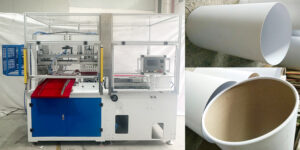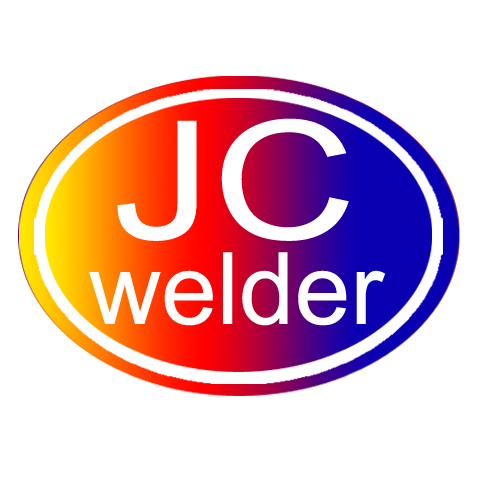- HF pvc tarpaulin welding machine
- RF pvc clamshell weld machine
- RF pvc inflatable products welder
- HF pvc clear bag weld machine
- HF plastic soft crease box making
- HF pvc double heads embossing
- pvc t-cleat belt welding machine
- pvc dry bag welding machine
- Radio frequency pvc mat welding
- RF pvc weld machine customized
- Cup face mask making machine
- Pvc cylinder tube make machine
- HF pvc tarpaulin welding machine
- RF pvc clamshell weld machine
- RF pvc inflatable products welder
- HF pvc clear bag weld machine
- HF plastic soft crease box making
- HF pvc double heads embossing
- pvc t-cleat belt welding machine
- pvc dry bag welding machine
- Radio frequency pvc mat welding
- RF pvc weld machine customized
- Cup face mask making machine
- Pvc cylinder tube make machine
similar machine for choose
How to make a perfect welding result
Before you are able to make a good weld, you have to make various adjustments to the HF welding machine.
Levelling the electrode
Levelling the electrode is very important in order to be able to apply an even pressure to the material. If the electrode has not been levelled correctly, the pressure will not be evenly distributed, as a result of which the quality of the weld will not be the same everywhere. A deviation of the electrode that is so great that an air gap is created could result in burn-outs.
Pressure and depth adjustment
Because the welding is done under pressure, the electrode will sink into the material as soon as the material starts to melt. If the pressure is too high, it costs too much power in the case of foot-operated machines, but if the depth setting is correct, it will cause no further problems. If the pressure is too low, the layers will not be pressed together well enough which will result in a poor joint, or an air gap will be created which could result in burn-out.
The depth to which the electrode sinks into the material can be limited using the depth adjustment of the HF welding machine. If the electrode is unable to sink deep enough into the material, you will not obtain a good joint. If the electrode sinks too deeply into the material, the material becomes too thin, which reduce the strength in situ of the weld/seal.
The necessary HF power
is mainly dependent on and proportional to the welding surface area of the electrode. Applicable as a rule of thumb is a power of 1 kW per 20-30 cm2. The variation is caused by the type of material, the thickness of the material and the number of layers.
To determine the appropriate power in case of a new application (new material or a new electrode), start with a low HF power and a long welding time. Switch the HF welding machine on and increase the power slowly until the potentiometer starts to increase and the required power (you can read it on the potentiometer) has been achieved. If you set the power too low, the welding process goes too slow or not at all. Setting the power too high results in burn-out.
Setting the HF power, welding time and cooling time
Then you set the welding time so that you get a good weld/seal. Setting the welding time too short results in poor fusion and therefore a poor weld/seal. Setting the welding time too long can deform the material.
The cooling time is the time the material is kept under pressure after the welding in order to cool down a bit. The cooling time is dependent on the material; if this cooling time is not long enough, you do not get a tight weld because the material deforms.
During the welding cycle the power will go down a bit, because during said welding cycle the electrode sinks into the material. You can correct this manually. Larger welding presses usually have a built-in automatic power control, which automatically corrects this.
If the HF welding machine is used continuously, the heated material will slowly heat up the electrode until – after a certain time – a balanced temperature is achieved. This heated electrode ensures that new material is pre-heated to a certain extent, as a result of which a bit less HF power is needed to obtain a good weld.
In actual practice this means that when a machine is “cold”, for example in the morning, you set the power optimally and then slowly reduce it somewhat in the first hour as the electrode heats up. Once the electrode has reached the balanced temperature, the power can remain constant.
Choosing and applying back-up material
On the table, the bottom electrode, a back-up material is virtually always used. This back-up material is not heated by the HF field and it has the following functions:
thermal insulation: prevents heat from “leaking out” to the bottom table;
electrical insulation: reduces the chance of burn-out;
mechanical: prevents the material from sticking to the bottom table.
Radiation Measurement
More people are increasingly being exposed to electromagnetic fields in their daily lives without being aware of it. Known examples of sources are radio, telephony and television transmitters, mobile phones and radar installations. The electromagnetic fields from these sources are also called non-ionizing fields, because the frequency (and therefore the energy content) of the fields is too low for atoms to be able to ionize and thus become harmful.
The last few years at both national level (Health Council) and European level (International Commission on Non-Ionizing Radiation Protection, ICNIRP), standards have been published in which the field strengths to which the human body may be exposed (exposure levels) are laid down. These standards also apply to industrial high frequency equipment. Fortunately, modern and well-maintained high frequency equipment is able to meet these standards.
We advise all users of industrial high frequency equipment to carry out radiation measurements at least once a year to check if the respective employee(s) has not been exposed to high radiation levels. These radiation measurements can, for example, be combined with the annual preventive maintenance activities.

auto clear plastic tube packaging boxes machines comparison
automatic clear plastic tube packaging machine economic design model JC-180S-A VS stable design model JC-450S

Auto tube cylinder packaging boxes machine JC-450S
introductions of automatic tube cylinder package boxes machine for raw material provided in piece sheet
